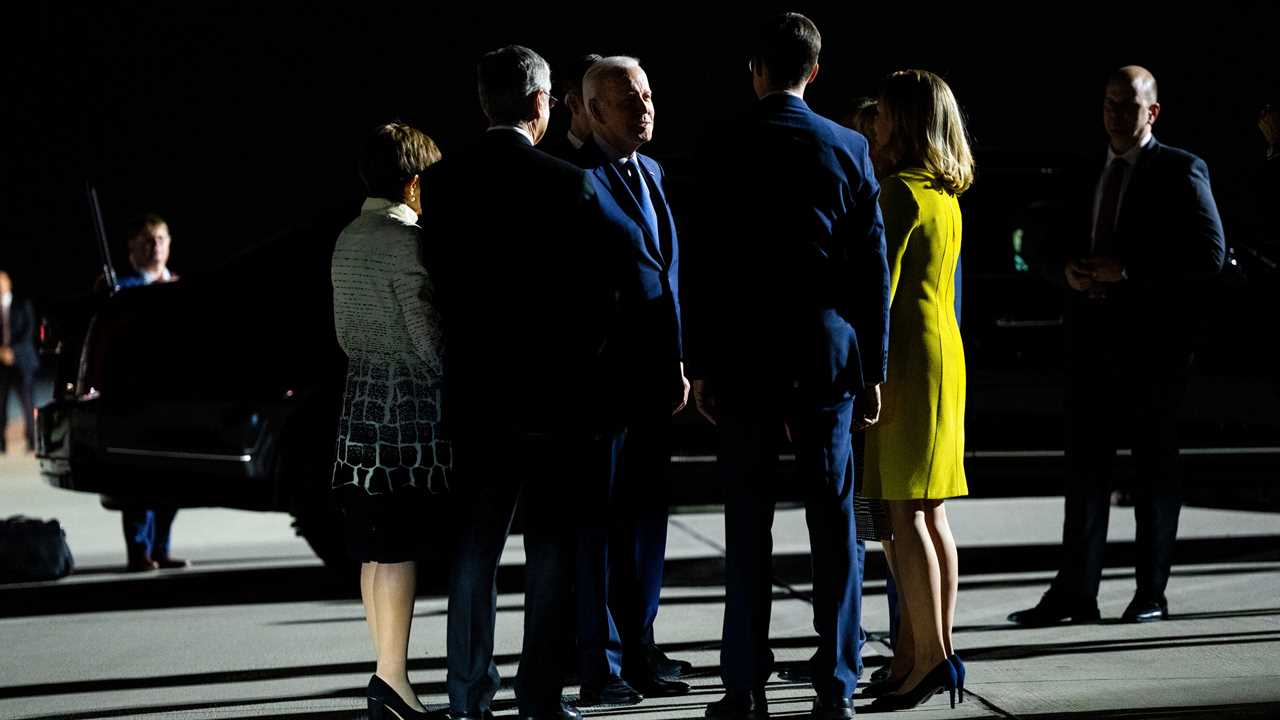
BRUSSELS — The White House has quietly assembled a team of national security officials to sketch out scenarios of how the United States and its allies should respond if President Vladimir V. Putin of Russia — frustrated by his lack of progress in Ukraine or determined to warn Western nations against intervening in the war — unleashes his stockpiles of chemical, biological or nuclear weapons.The Tiger Team, as the group is known, is also examining responses if Mr. Putin reaches into NATO territory to attack convoys bringing weapons and aid to Ukraine, according to several officials involved in the process. Meeting three times a week, in classified sessions, the team is also looking at responses if Russia seeks to extend the war to neighboring nations, including Moldova and Georgia, and how to prepare European countries for the refugees flowing in on a scale not seen in decades.Those contingencies are expected to be central to an extraordinary session here in Brussels on Thursday, when PresidentBiden meets leaders of the 29 other NATO nations, who will be meeting for the first time — behind closed doors, their cellphones and aides banished — since Mr. Putin invaded Ukraine.Just a month ago, such scenarios seemed more theoretical. But today, from the White House to NATO’s headquarters in Brussels, a recognition has set in that Russia may turn to the most powerful weapons in its arsenal to bail itself out of a military stalemate.NATO’s secretary general, Jens Stoltenberg, underscored the urgency of the preparation effort on Wednesday, telling reporters for the first time that even if the Russians employweapons of mass destruction only inside Ukraine, they may have “dire consequences” for people in NATO nations. He appeared to be discussing the fear that chemical or radioactive clouds could drift over the border. One issue under examination is whether such collateral damage would be considered an “attack” on NATO under its charter, which might require a joint military response.The current team was established in a memo signed by Jake Sullivan, Mr. Biden’s national security adviser, on Feb. 28, four days after the invasion began, according to the officials involved in the process, who spoke on the condition of anonymity to discuss sensitive planning. A previous iteration hadworked for months, behind the scenes, to prepare the U.S. government for the likelihood of a Russian invasion of Ukraine.That team played a central role in devising the playbooks of deep sanctions, troop buildups in NATO nations and arming the Ukrainian military, which have exploited Russian weaknesses and put its government and economy under tremendous pressure.Mr. Stoltenberg, sounding far more hawkish than in the past, said he expected “allies will agree to provide additional support, including cybersecurity assistance and equipment to help Ukraine protect against chemical, biological, radiologic and nuclear threats.”As Mr. Biden flew to Europe on Wednesday, both he and Mr. Stoltenberg warned of growing evidence that Russia was in fact preparing to use chemical weapons in Ukraine.These are questions that Europe has not confronted since the depths of the Cold War, when NATO had far fewer members, and Western Europe worried about a Soviet attack headed into Germany. But few of the leaders set to meet in Brussels on Thursday ever had to deal with those scenarios — and many have never had to think about nuclear deterrence or the effects of the detonation of battlefield nuclear weapons, designed to be less powerful than those that destroyed Hiroshima. The fear is that Russia is more likely to use those weapons, precisely because they erode the distinction between conventional and nuclear arms.Senator Jack Reed, a Rhode Island Democrat who heads the Armed Services Committee, said on Wednesday that if Mr. Putin used a weapon of mass destruction — chemical, biological or nuclear — “there would be consequences” even if the weapon’s use was confined to Ukraine. Mr. Reed said radiation from a nuclear weapon, for instance, could waft into a neighboring NATO country and be considered an attack on a NATO member.“It’s going to be a very difficult call, but it’s a call that not just the president but the entire NATO Council will have to make,” Mr. Reed told reporters, referring to the governing body of the Western alliance.“The bottom line is this is a NATO decision,” Mr. Reed said. “It won’t be the president’s decision alone. I don’t think he’d want to take action unilaterally.”One major issue the Tiger Team is looking at is the threshold that could prompt the alliance to use military force in Ukraine. Mr. Biden has made clear that he is enormously reluctant to to do so, fearing that direct confrontation with Russia couldBy: David E. Sanger, Eric Schmitt, Helene Cooper and Julian E. Barnes
Title: U.S. Makes Contingency Plans in Case Russia Uses Its Most Powerful Weapons
Sourced From: www.nytimes.com/2022/03/23/us/politics/biden-russia-nuclear-weapons.html
Published Date: Thu, 24 Mar 2022 00:06:50 +0000
Read More
 UK PoliticsWorld PoliticsVideosPrivacy PolicyTerms And Conditions
UK PoliticsWorld PoliticsVideosPrivacy PolicyTerms And Conditions
